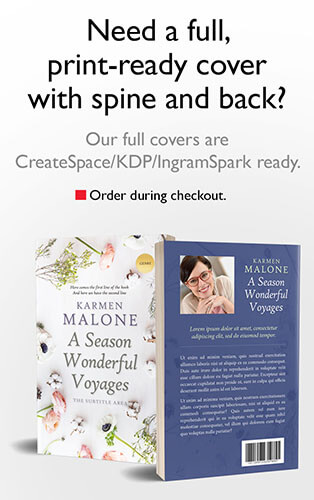For many writers, the ultimate dream is to see their work published. However, navigating the submission process can be a labyrinthine task filled with rules, expectations, and requirements that vary from one publisher to another. Whether you’re a debut author or a seasoned writer, understanding the best practices for submitting your work can drastically improve your chances of getting published. Here’s a comprehensive step-by-step guide, complete with examples from famous publishers, to help you on your journey.
Step 1: Identify the Right Publisher for Your Work
The first step is to target publishers that are aligned with your genre and style. Each publisher has its own market niche, and narrowing down those that fit your manuscript will save both you and the publishers valuable time.
Example:
- Penguin Random House
- Genres: Literary fiction, non-fiction, young adult, children’s books, memoir, mystery, romance
- HarperCollins
- Genres: General fiction, non-fiction, young adult, fantasy, science fiction, romance, thrillers, memoirs
- Simon & Schuster
- Genres: General fiction, non-fiction, memoir, self-help, young adult, children’s books
- Hachette Book Group
- Genres: General fiction, non-fiction, romance, science fiction, fantasy, children’s books, thrillers
- Macmillan Publishers
- Genres: Literary fiction, non-fiction, science fiction, fantasy, mystery, young adult, children’s books
- Scholastic
- Genres: Children’s books, young adult, middle grade, educational books
- Bloomsbury Publishing
- Genres: Literary fiction, non-fiction, young adult, children’s books, academic books
- Tor Books (Macmillan)
- Genres: Science fiction, fantasy, horror
- Harlequin (HarperCollins)
- Genres: Romance, women’s fiction, historical fiction
- Crown Publishing Group (Penguin Random House)
- Genres: General fiction, non-fiction, memoirs, cookbooks, self-help
- Kensington Publishing Corp.
- Genres: Romance, thrillers, mystery, non-fiction, historical fiction
- St. Martin’s Press (Macmillan)
- Genres: General fiction, romance, thrillers, mystery, historical fiction, non-fiction
- Chronicle Books
- Genres: Illustrated books, children’s books, non-fiction, lifestyle, arts & crafts, cookbooks
- G.P. Putnam’s Sons (Penguin Random House)
- Genres: Literary fiction, mystery, thrillers, non-fiction
- Ballantine Books (Penguin Random House)
- Genres: Fiction, romance, science fiction, fantasy, mystery
- Graywolf Press
- Genres: Literary fiction, poetry, non-fiction, memoirs
- Sourcebooks
- Genres: Fiction, romance, young adult, children’s books, non-fiction
- Houghton Mifflin Harcourt
- Genres: General fiction, non-fiction, children’s books, young adult, cookbooks
- DAW Books (Penguin Random House)
- Genres: Science fiction, fantasy
- New Directions Publishing
- Genres: Literary fiction, poetry, translations, non-fiction
Action Point: Create a list of 10-15 publishers whose catalogs align with your manuscript’s genre and style. This targeted approach will increase your chances of finding a suitable publisher.
Step 2: Thoroughly Read Submission Guidelines
Every publisher has specific submission guidelines that must be followed to the letter. Not adhering to these guidelines can result in your manuscript being dismissed outright.
Example:
- HarperCollins: Asks for a query letter, a synopsis, and the first three chapters of your manuscript. They prefer submissions through email, specifically in a .doc or .pdf format.
- Simon & Schuster: Requests a query letter and outline, and advises inclusion of a brief author bio. They also emphasize following their detailed formatting guidelines.
Action Point: Print or save the submission guidelines for each publisher on your list. Highlight key requirements like document type, length, and method of submission.
Step 3: Prepare Your Manuscript
Ensure your manuscript is polished to perfection. Multiple rounds of proofreading and, if possible, professional editing can make your work stand out.
Action Point: Run a final proofread of your manuscript. Check for typos, grammar issues, and formatting consistency. Make sure it adheres to the specific formatting guidelines provided by the publishers you are targeting.
Step 4: Write a Compelling Query Letter
Your query letter is your first point of contact with the publisher and needs to capture their attention. It should be clear, concise, and compelling, offering a brief overview of your manuscript and explaining why it’s a good fit for the publisher.
Example:
- Bloomsbury Publishing: Requires a compelling cover letter stating the title, genre, word count, and a brief synopsis. They also appreciate knowing why you chose to submit to them and how your work fits with their catalog.
Action Point: Draft and tailor your query letter for each publisher. Make sure it highlights the unique aspects of your manuscript and why it would be a good fit for their catalog.
Step 5: Craft a Concise Synopsis
Your synopsis should provide a clear, engaging summary of your manuscript. It is critical that it captures the main plot points, character arcs, and thematic elements without delving into unnecessary detail.
Action Point: Write a one-to-two-page synopsis that succinctly outlines your story. Make sure it is engaging yet informative, highlighting the most compelling aspects of your manuscript.
Step 6: Assemble Your Submission Package
Compile all the required documents as per the publisher’s guidelines. This usually includes your query letter, manuscript (or sample chapters), synopsis, and sometimes additional elements like a marketing plan or author bio.
Example:
- Hachette Book Group: Requires a query letter, a synopsis, the first three chapters, and a marketing plan for non-fiction submissions.
Action Point: Double-check that you have included all required documents, formatted according to each publisher’s specific guidelines.
Step 7: Submit Your Work
Send your submission as per the publisher’s instructions. This could be through an online form, email, or postal mail. Ensure that all your files are appropriately named and formatted.
Example:
- Macmillan Publishers: Often prefers submissions through an online form on their website, with specific instructions on file formats and naming conventions.
Action Point: Submit your work and keep a record of all submissions, noting down dates and any confirmation emails received.
Step 8: Practice Patience
The waiting period can be nerve-wracking, but it’s a vital part of the process. Publishers receive a high volume of submissions, and it can take several weeks or even months to hear back.
Action Point: Track your submissions and be patient. If the publisher’s guidelines suggest a follow-up period, make a note of this and act accordingly.
Step 9: Handle Rejections Professionally
Rejections are inevitable, but they are also learning opportunities. Take any constructive feedback and apply it to improve your work or your submission approach.
Action Point: Record rejections and any feedback received. Use this insight to refine future submissions.
Step 10: Celebrate Milestones
Every small victory, whether it’s personalized feedback or a manuscript request, is a step forward. Don’t forget to celebrate these milestones.
Action Point: Share your successes with your support network and take a moment to appreciate your progress.
Conclusion
Submitting your work to a publisher involves a well-orchestrated blend of research, preparation, and patience. By identifying suitable publishers, meticulously following submission guidelines, and showcasing your best work, you can improve your chances of getting noticed. Remember, the journey to publication is often a marathon, not a sprint. Keep pushing forward with persistence and professionalism, and your manuscript could soon find its way into print.







